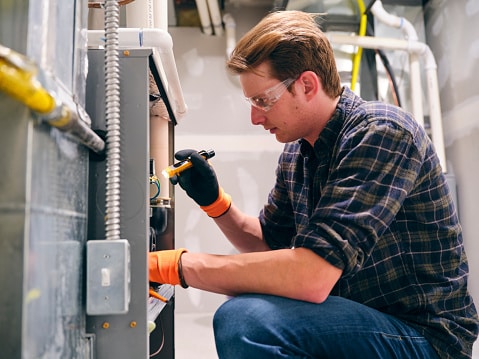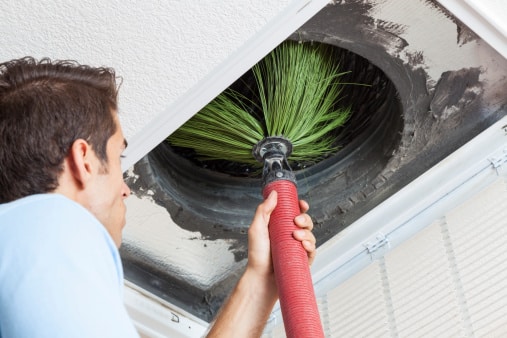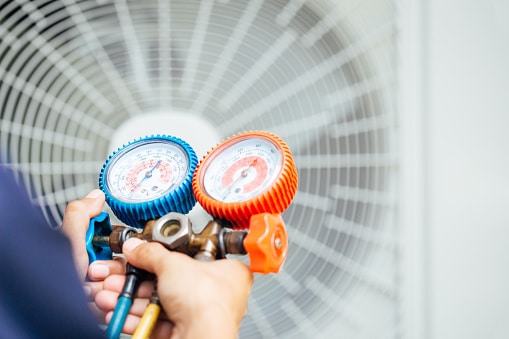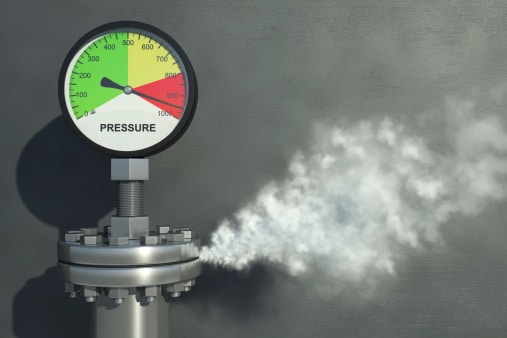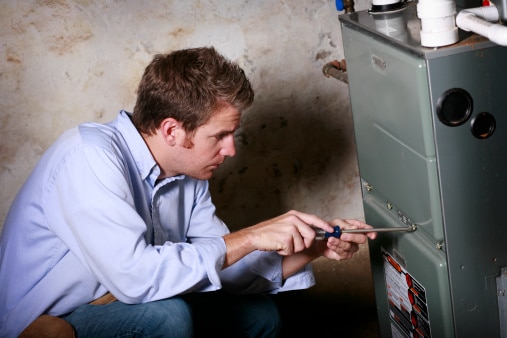
HOW TO REPAIR FURNACE IGNITOR
HOW TO REPAIR FURNACE IGNITOR
Dan has been in the HVAC business for a considerable length of time with experience going from establishment and administration to deals and dispersion.
Is Your Furnace Not Lighting?
Do you feel it getting a piece crisp? Do you hear the heater running, yet you’re getting just virus air and it continues to turn on and off? And afterward . . .
Precisely. You don’t hear anything.
Indeed, contingent upon what time it is, you might need to get a few additional covers, however, fortunately, you could possibly sort this one out for yourself and even fix the issue quite without any problem.
Diagnosing an issue how to repair furnace ignitor with your hot surface ignitor (silicon nitride or carbide ignitor) is somewhat straightforward and it is similarly as simple to supplant it. So tie on your work boots, get out your tool kit, and we should get this thing running. (Simply joking. You won’t require work boots by any means and likely only one device.)
Heater Safety
As usual, while working with gas as well as HOW TO REPAIR FURNACE IGNITOR as an electric machine, be certain that the power is off and that you take extraordinary consideration of your security. Try not to figure out or expect anything while chipping away at your heater. It ultimately depends on you to choose if you are fit to play out the maintenance examined in this article.
This is what a hot surface ignitor resembles set up in the heater — genuinely concealed and directly before where the gas initially comes into the heater to be lit.
This is what a hot surface ignitor resembles set up in the heater — genuinely concealed and directly before where the gas initially comes into the heater to be lit.
What Is a Hot Surface Ignitor?

A hot surface ignitor is a gadget utilized in most current heaters to light the gas you use for heat. A somewhat straightforward part works very like a toaster oven in that its intensity is created by constraining 120 volts through an uncovered, safe material. For this situation, that material is generally silicon carbide or silicon nitride.
Presently, I utilized the word safe gently. Depending on it, this part is extremely delicate. It is electrically safe, not influenced safe by any means. While dealing with this part, be extremely mindful so as not to whack it against anything, and don’t contact it with your uncovered hands. Indeed, even the smallest break in the ignitor can cause it not to work, and the oils from your skin can cause disappointment as well.
Different kinds of ignitors.
Type 1 – Here is the full perspective on the ignitor displayed previously. How to repair furnace ignitor This is a very rare example of this kind of type.
Different kinds of ignitors. Type 2 – Here is one more kind of hot surface ignitor.
Different kinds of ignitors. Type 3 – Here is one more sort, with its own intensity sensor worked in.
Different sorts of ignitors. Type 4 – Here is a flash ignitor. This uses an electric flash to light your gas heater. I simply thought it’d be great to show the distinction.
Different sorts of ignitors. Type 1 – Here is the full perspective on the ignitor displayed previously. This is a rare example of this kind of type.
Diagnosing the Problem
Diagnosing a broken hot surface ignitor is actually very basic. There are not very many times where your eyes and ears will trick you, so chances are, in the event that you watch and tune in, you’ll be aware assuming your ignitor is terrible.
Basically, watch the heater the following time it attempts to fire up. Quite possibly in the event that your heater was attempting to begin yet didn’t, it very well might be in a lockout stage. This is a well-being default on your heater and can be superseded by stopping the principal capacity to the unit, standing by roughly 60 seconds, and afterward walking out once more. Presently your heater ought to attempt to restart, so watch and tune in.
As the heater does its thing, you’ll hear the fan come on. Then, at that point, maybe — assuming you have one — you’ll hear the more modest inducer fan turn on. Presently, you ought to see your hot surface ignitor start to gleam followed by a “tick” sound. This “tick” is the gas valve opening. At long last, you ought to see the light of the blaze.
No gleaming? No fire? Your hot surface ignitor is awful. Essentially that will be the case more often than not.
Here is an illustration of the electrical association of the ignitor. Turn off the former one, and plug in the new one. It’s just simple.
Supplanting a Furnace Ignitor

It is easy to Replace the hot surface ignitor. The key, once more, is to be cautious due to how delicate these can be. I don’t intend to moronic it down, yet you simply take out a screw, eliminate the part, and fix the clasp. That is all there is to it. The new part returns similarly to the old part that emerged, just more cautiously.
I in all actuality do suggest purchasing two; I did this when I chipped away at heaters all day. This saved me an outing at least a couple of times, and while fixing my own, I wound up with an extra that I realize I’ll utilize sometime in the not-so-distant future. These will quite often go out about every five or six years, and no one can say with any certainty assuming it very well may be sooner, so having one on hand is great.
Another significant point is certain you get the legitimate substitution. You won’t see these at your enormous box home improvement stores, so call a nearby distributor for a substitution. Make certain to call one that has arrangements in your unit’s image or sister brand, and have the model number prepared. Take the old part with you alongside its mounting section and electrical connector. At times, the main contrast in the ignitors will be these two things, however, they are a significant distinction, so you maintain that they should be right, as well. You can anticipate that this part should cost somewhere close to $25 and $50 — still a lot less expensive than a help call.
A side perspective on the ignitor setup. See the section prompting the right? The tip of that screw is the main screw you really want to eliminate.
Furthermore, here is a perspective on the burner gathering. Toward the right you see the wiring and clasp prompting the ignitor and on the left, the wire prompting the fire sensor.

Heater Repair Tips
In the event that you see the ignitor is working like it ought to, you probably have an alternate issue. Have a go at really taking a look at two or three of these things for other simple fixes.
Intertwine:
There is a 3-amp meld on your circuit board. Obviously, on the off chance that it blows, you probably have nothing happening by any means in the heater.
Fire Sensor: This is an extremely normal issue with heaters and, once more, another simple fix. With this, your heater will probably fire and afterward shut down nearly as quickly.
Indoor regulator: Perhaps now is the ideal time to supplant your old indoor regulator with a fresher, more precise one. Not that your heater closing down has to do with exactness, yet a matured indoor regulator can make a heater do interesting things, as well.
I trust that something here has the home fires consuming once more HOW TO REPAIR FURNACE IGNITOR. As usual, my point is to help you, and my expectation is that you’ll help other people.
Need More Furnace Help?
Instructions to Figure Out What is Wrong With Your Furnace HOW TO REPAIR FURNACE IGNITOR
Do you have at least some idea of how your heater should function? If not, how would you plan to fix it? This center will assist you with understanding the legitimate working request of a heater so you can pinpoint issues and fix them or know what to let individuals know who will.
This article is exact and consistent with the best of the writer’s information. Content is for educational or amusement purposes just and doesn’t fill in for individual direction or expert guidance in business, monetary, lawful, or specialized matters.
Questions and Answers
Question:
I purchased another heater igniter yet it is longer than the former one; is it protected to utilize?
Reply:
So long as it is mounted safely and straightforwardly in the way of the gas as it was then you ought to be fine. Is it the legitimate voltage? That is significant.
Question:
After refueling my heater it won’t kick back on. I have switched it now and again a couple of times attempting to drain the air out. What else could I at any point do?
Reply:
I don’t honestly think that starting the heater now and again to drain is the legitimate method for doing as such. I believe it’s more similar to draining a messed-up line in the event that you ran it unfilled. I would have an expert deal with this since I can say whether caused wrong you can hurt the unit and possibly a perilous circumstance.
Question:
What is the right direction of the ignitor safeguard?
Does it go between the ignitor gas source, or does the ignitor go between the safeguard and gas source?
Reply:
There is no igniter safeguard that I am mindful of beyond a barbecue to shield it from oil. I don’t know what you have or are chipping away at, however, nothing ought to be between the igniter and gas supply. That could slow start, subsequently making the development of gas before the start and that is terrible.
© 2012 Dan Reed
Remarks
Emily on December 08, 2019:
So is my ignitor awful assuming I need to fan it on its subsequent light? I previously cleared the sensor off and it appeared to work for some time however at that point it stops. I don’t know whether how I am phrasing this seems OK yet I would rather not buy some unacceptable part. The odd thing is it appears to work in some cases subsequent to turning the switch on and off multiple times.
Michael Langan on November 12, 2019:
with an igniter with an intensity sensor, does the intensity sensor fill a similar need as a fire sensor? I can’t track down a fire sensor on my unit, yet it is acting as if a fire sensor issue exists.
Brian on October 12, 2019:
So my ignitor is becoming red yet the gas won’t open and burst into flames. The LED indicative says “inappropriate fundamental ground or line voltage under 75 volts. Or on the other hand, broken ignitor or open ignitor circuit.” Should I supplant the ignitor?
Dan Reed (creator) on February 26, 2018:
Be certain the igniter you’re utilizing is the appropriate voltage…typically 120V or 80V and furthermore that the power being provided by the board is legitimate. If not, it very well may be causing the issue.
Richard M Cortellini on February 25, 2018:
since supplanting the last ignitor 2.5 a long time back, I’ve supplanted the ignitor 2x over the most recent fourteen days.
Dan Reed (creator) on December 30, 2017:
California – I’m inclining towards as far as possible/fan switch or one of the carry-out switches. It’s certain to behave like a fire sensor however that precluded this future, my suspects. They are somewhat reasonable parts. I trust it is as those are simple fixes yet difficult for me to make certain from here.

